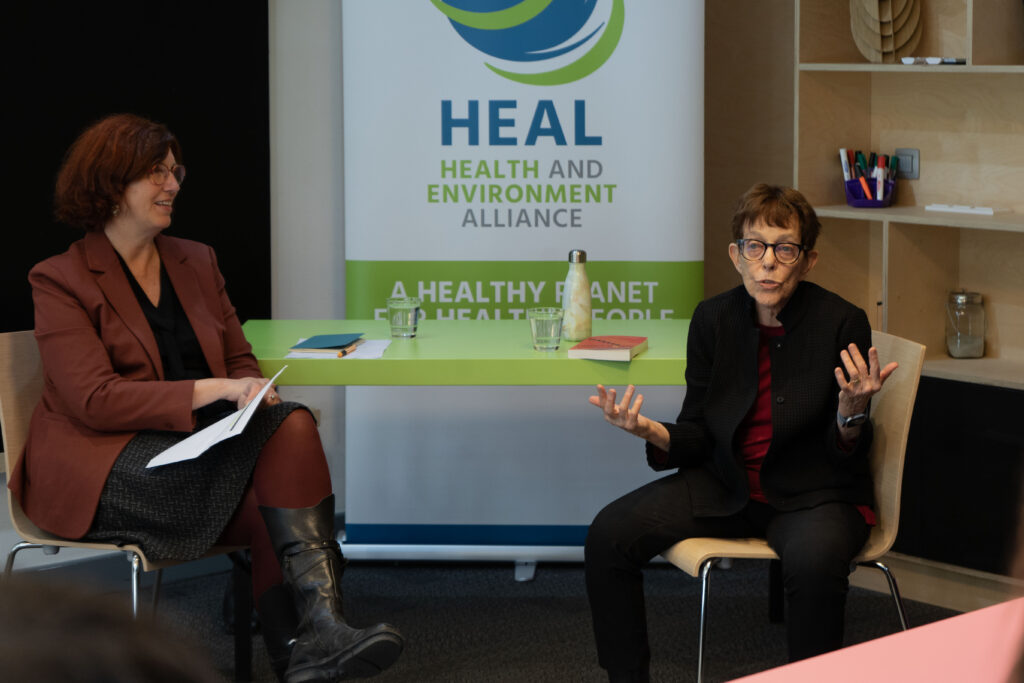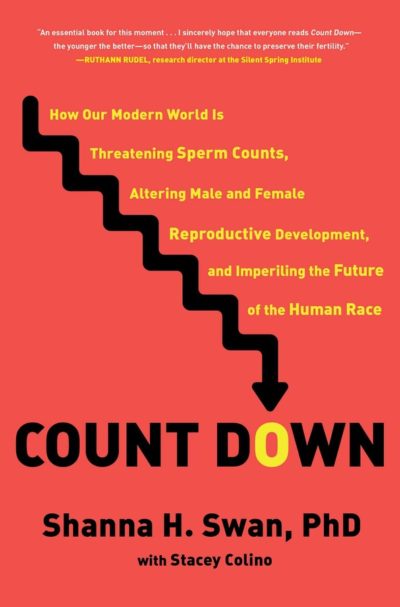HEAL welcomes the call from 250 scientists urging the European Commission to follow scientific recommendations and include provisions to account for the effects of chemical mixtures to better protect health in the upcoming revision of REACH, the EU’s regulation for chemicals.
HEAL was honoured to host renowned epidemiologist Dr. Shanna Swan in Brussels in May. She met with different stakeholders to discuss impact of pollution to reproductive health. See insights below on her astounding research.

To specifically assess sperm decline, Dr. Swan has examined hundreds of scientific studies and conducted her own, which all indicate that sperm count is declining globally over the observed past 50 years at a rate of 1%, with the decline increasing to over 2.6% when observing studies after the year 2000. This is the case even when controlling for all variables such as genetic and lifestyle factors.
As chemical use has increased, so has sperm decline. Phthalates impact on health, which are synthetic chemicals used, for example, to make plastic more flexible, and cosmetics and scents more long-lasting, have been something Dr. Swan has followed keenly. These chemicals have an anti-androgenic effect that lowers testosterone. As a result, they can knock out the surge of testosterone in utero, with impacts on male genital development such as smaller size or smaller ano-genital distance (AGD), and undescended testicles.
Shorter AGD has been linked to decreased sperm count. Further another study conducted in men who live in areas with higher pesticide usage compared to men a control group in an urban area, found they had half the sperm count.

Dr. Swan reminds that a clue to human exposure and health impacts of harmful chemicals is in studying animal species in those areas. When observing the World Bank fertility data, there is a notable fall showing a total fertility count decline of 1% per year, which mirrors a similar 1% decline in other species populations and sperm counts. The fertility decline observed in other species is similar to that seen in humans, which suggests this trend is not simply due to lifestyle factors. Dr. Swan also reminded that exposure to chemicals has a transgenerational effect, as our exposure to harmful chemicals affects not only our children but also our grandchildren, as the germ cells present in the egg and fetus will be passed on.
“To put it simply – we are in a fertility crisis because of the amount of synthetic chemicals in the environment. The science we already have is alarming, and it is only the tip of the iceberg. People should not have to worry about exposure to harmful chemicals in their daily life – and for that we need stronger regulation.” Dr. Swan stated.
The Health and Chemicals Programme lead at HEAL Sandra Jen issues a reminder for European policymakers: “This is a critical moment to protect both current and future generations from harmful chemicals. As the European Commission prepares to revise the EU’s REACH chemical regulation, they must prioritize human health over mere economic competitiveness. An unhealthy, declining population is not an advantage.”
Notes:
Dr. Shanna Swan an award-winning scientist and a Professor of Environmental Medicine and Public Health at the Icahn School of Medicine at Mount Sinai in New York City. She has published more than 200 scientific papers. Her work has examined the impact of the environment on reproductive health and neurodevelopment.
She is author of the book Count Down: How Our Modern World Is Threatening Sperm Counts, Altering Male and Female Reproductive Development, and Imperiling the Future of the Human Race, also available in French, German and Italian. For further information see Dr. Swan’s website.



